Kitty Hawk & Revell-Monogram 1/48 scale
F-101C and F-101B
by Steve Corvi

Kitty Hawk's 1/48 scale F-101A/C is available online from Squadron
Background
The McDonnell Voodoo was originally designed as a long-range bomber escort shortly after World War II based upon the experience of the P-51 support of the Eighth Air Force bombing missions. The early prototypes were the XF-88 and they were powered by two XJ-34 turbojets and subsequently upgraded with early afterburners. The XF-88 won the flight evaluations for the program but changing requirements led to the program's cancellation in 1950.
Renewed interest in the concept came a year later after the vulnerability of the bomber aircraft (B-29’s) in the Korean conflict was revealed. The need fro a long range bomber escort was reconsidered by the USAF and proposals for the XF-88 were made. The F-88 was redesigned to accept then ‘new’ J57 engines (the engine used in North Americans’ F-100 Super Sabre and Chance-Vought’s F-8 Crusader) and redesignated as the F-101 Voodoo.
The USAF leadership and procurement of the program shifted from SAC to TAC and the F-101A entered service in 1957. The airframe experienced some teething problems. The major one was the tendency of the aircraft to pitch-up, a problem which was never fully corrected even after much effort. Brigadier General Robin Olds, who commanded a Voodoo wing, reported that with little effort by the pilot, the F-101A suddenly and without warning would go into pitch-up, even while cruising. The angle of attack needed to achieve lift with full flaps and drop tanks was very close to the pitch-up stall point, where the flow of air over the wings created a downflow greater than the lift. McDonnell fitted an active inhibitor which helped to partially clear up the pitch-up problem. The pitch-up problem was never really completely cured, and remained a nuisance throughout the Voodoo's service life. The F-101C soon followed with increased structural strength to meet its original 7.33G maneuver requirement as well as accommodate additional fuel capacity. As a fighter and fighter/bomber, the F-101A/C has a very short operational life, while the reconnaissance versions RF-101A/C would have extensive operational service. The unarmed photographic reconnaissance configuration under the designation YRF-101A retained the J57-P-13 engines of the fighter-bomber version but had a redesigned and longer nose housing for four cameras designed for low-altitude photography and also two high-altitude cameras were mounted behind the cockpit in the area of the gun armament. This version was by far the most successful version of this airframe and served an illustrious career in Vietnam. The RF-101C was the only Voodoo version to serve in Vietnam. RF-101Cs were deployed to South Vietnam in October-November of 1961 to fly intelligence gathering flights over South Vietnam and Laos. They flew their missions through most of America’s involvement in this conflict and were to be replaced by the RF-4C Phantom, but the needs of the war and slow development of the reconnaissance version of the Phantom, which necessitated a longer service duration. The RF-101 served well in this capacity and was eventually retired and removed from service and shifted into ANG units back in the states.
The Two seat interceptor version F-101B was procured by the USAF in 1959 for use in the Air Defense Command Fighter Interceptor squadrons. The first squadron to receive there Voodoos was the 60th Interceptor Squadron at Otis AFB in Massachusetts on January 5, 1959. The F-101B retained the center and rear fuselage sections and the wing and tail surfaces of the F/RF-101A but it had a revised forward fuselage housing the MG-13 fire control system with automatic search and track mode, a two-seat tandem cockpit with pilot in front and radar operator in the rear, a retractable flight refuel probe in front of the pilot's cockpit, and an all-missile armament. The F-101B was fitted with the more powerful Pratt & Whitney J57-P-55 turbojets, which were 24 inches longer (the longer afterburners raised maximum thrust rating from 15,000 pounds to 16,900 pounds) than those of the J57-P-13 which powered the single-seat Voodoos. This changed the configuration of the tail Keel area. The F-101B was heavier than its single-seat cousin and it employed larger tires with a beefed-up undercarriage. Bulges had to be installed in the lower gear doors and in the undersides of the fuselage in order to accommodate the larger tires. Armament consisted of six Hughes GAR-1 semi-active radar homing or GAR-2 infrared-homing AIM-4 Falcon missiles carried on and launched from a rotary armament door covering the fuselage bay beneath and behind the rear cockpit. Two missiles were attached to recessed slots on each side of the door, with two missiles sitting outside exposed and two inside. After the first two missiles were launched, the door was flipped over, and this readied the next missiles to be fired. The F-101B intercepter also served in the RCAF and was a highly successful type. IT won many of the coveted interceptor awards including the William Tell meet .The F-101B began to leave active duty with the USAF in 1969 and many aircraft were passed along to the Air National Guard. The last active duty USAF squadrons to fly the F-101B were the 60th and 62nd FISs which were deactivated in April of 1971. However, a few F-101Bs continued on with training units for another ten years. The last Voodoo in US service (F-101B-105-MC 58-300) was finally retired by the 2nd Fighter Interceptor Training Squadron at Tyndall AFB in Florida on September 21, 1982. This attests to an excellent design and sturdy airframe for the Voodoo to serve for three decades!
The Kitty Hawk Kit
The release of the Kittyhawk 1/48 F-101A/C was good news to many peoples ears and seeing that Detail and Scale were working with the model manufacturer there was good feelings about this project.

This is an airframe that I have wanted for many years I even built a conversion of it in 1/48 back in February 1999 for SAMI (Scale Aviation Modeller International) with the C & H Aero Miniatures resin conversion.
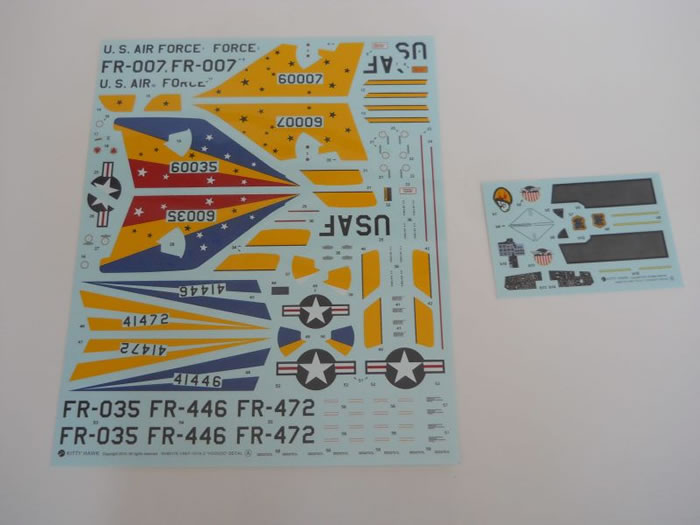
I purchased this kit straight from Hong Kong to get it immediately and was duly impressed with the tooling and detail of the kit. The kit contents were superbly presented and the decals were well printed and in perfect register. There were a few mishaps in the placement and instructions on the ventral decals but this can be easily remedied with some good reference photos. It also contained some nice etched brass parts to dress up the front office and the burner cans.
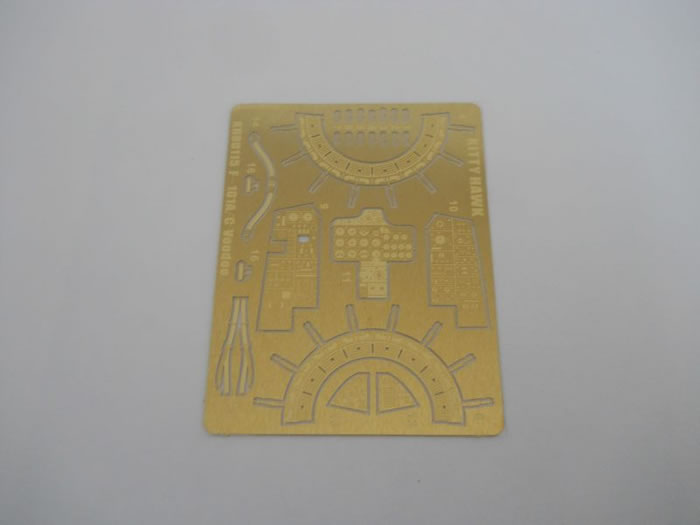
Now before I even began to build this kit I was reading some negative comments on the fit of the kit and hearing words of being unbuildable and various other non-positive mojo. I decided to build the kit straight from the box except for the addition of the True Details resin seat. I also wanted to build the two seat version from Monogram as a comparison.
Overall the build was good, but there are some areas that need to be outlined as possible “problem” areas.
The first is the fit of the nose wheel bay and cockpit tub. They do NOT fit well in the nose fuselage pieces and I recommend that you test fit this area before committing to any cement.
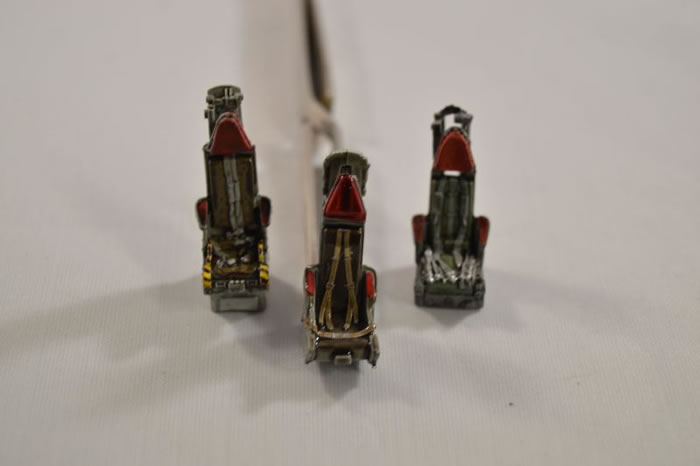
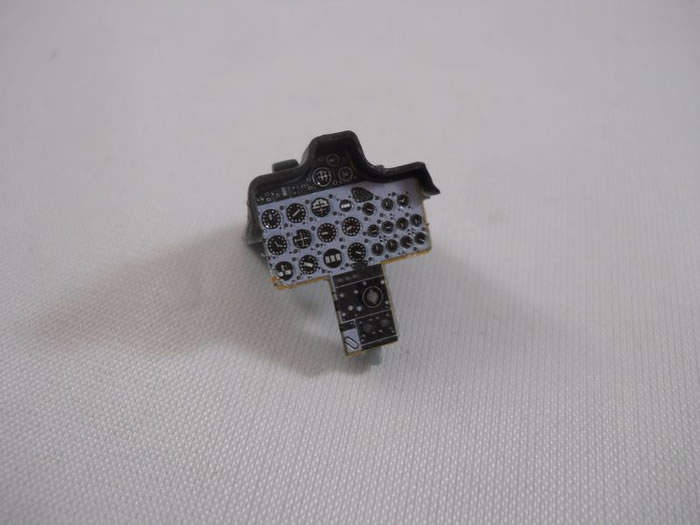
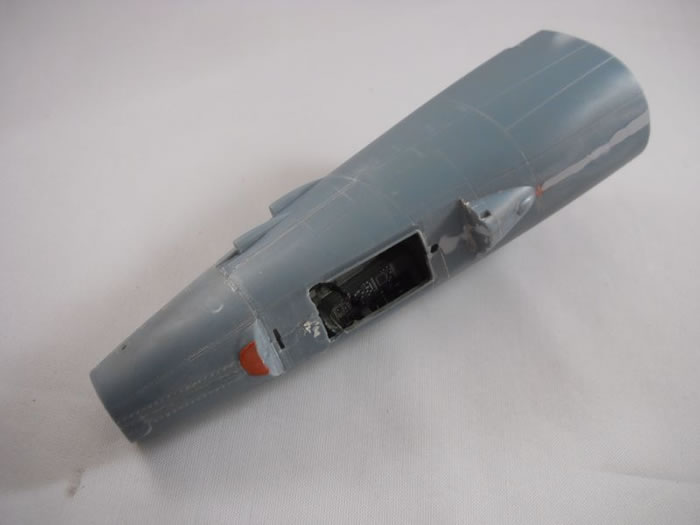
The top of the nose bay needs to be sanded down quite a bit to get everything to fit. The components fit pretty well but again I suggest test fitting before gluing. The other problem area was the burner cans which are multi-piece affair and really don’t fit flush. I forced the fit with clamps and superglue to get a satisfactory fit-still not happy with it.
The photo-etched parts in the burner can area are nicely detailed and are a nice addition but are not the best fitting parts.
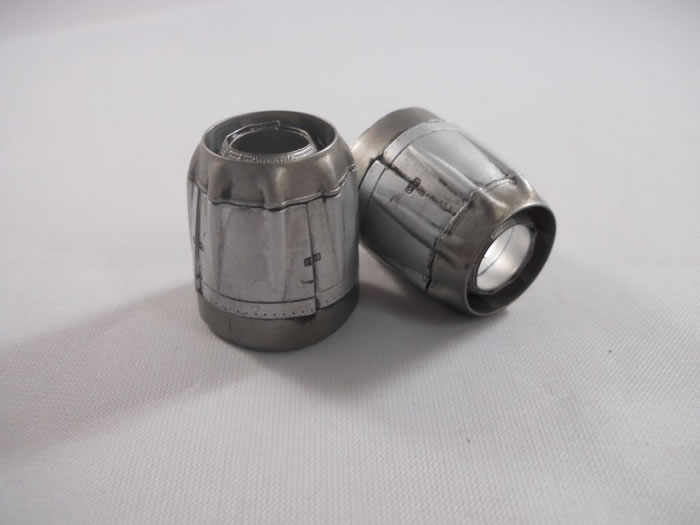
The rest of the Kittyhawk kit went together pretty good as long as one was careful in fitting the main airframe components.
Another area of caution is the wing fit. I suggest you test fit the wing fit with the splitter plates on the intakes in place and off—to get a proper sit of the wings. However, with this being said, the intakes have the wrong shape and should be more vertical rather than the angled slant they have which is indicative of the F-101B model and not the early A/C models. I don’t lambast Kittyhawk for this since one needs to look real close to catch this error and know the airframe well.

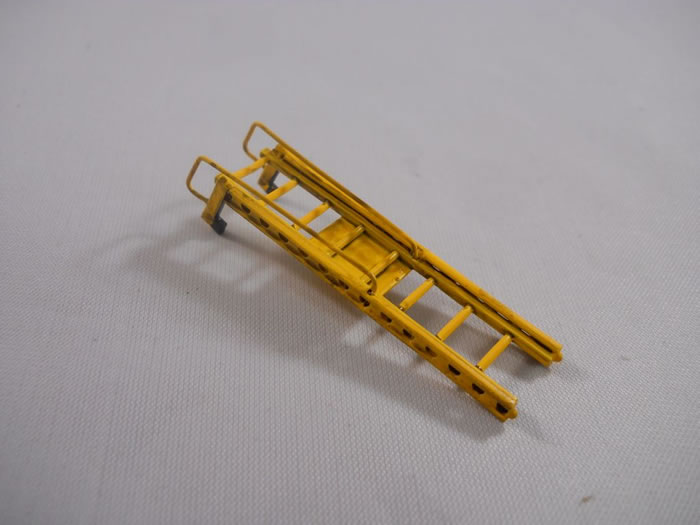
Kittyhawk also molded the slime light detail on the fuselage and tail area and this has to be sanded off since this was not present on the early Voodoo variant.
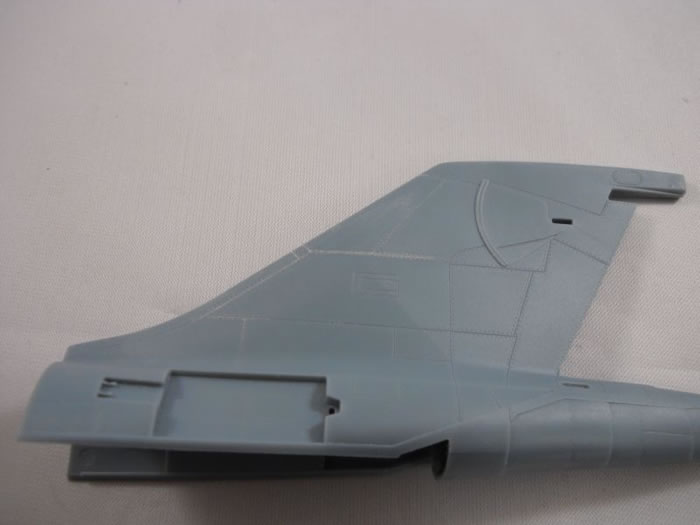
After I got the main airframe together I liked the kit overall and feel I could give it another shake and put out perhaps an even better effort (now I know where all the pitfalls are). The plastic is a bit pebbly (sort of like early Kinetic kits) and one needs to be aware of this when applying a natural metal finish.
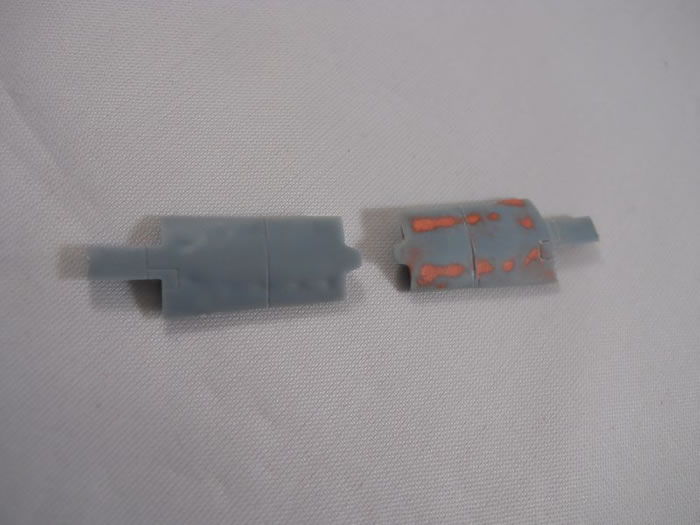
I employed multiple shades of Alclad for this build with a gloss clear undercoat finish as a primer. I also employed the excellent SAC (Scale Aircraft Conversions) white metal landing gears which gives it a little stronger base in which to sit. I recommend using the SAC gears for this build. I also quickly scrathbuilt the boarding ladder for figure display in the future.

Overall, A good build with a few areas of concern for the builder with a modicum of skill.
Now for the counterpoint.
I also built the older tooled (raised panel lines) Monogram F-101B kit. I will admit the fit was a bit better on the Monogram kit but some of the details were softer and some were even better. The cockpit and seat detail on the Monogram kit is superior to the Kittyhawk kit (even with Kittyhawks’ mulit-media ejection seat). Of course the Kittyhawk engravings were nicer and the wing detail was sharper than the Monogram wings.
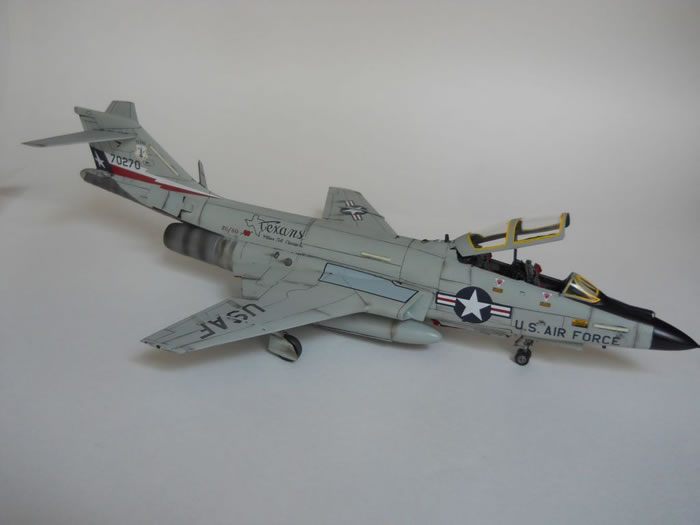
One area that was bit of a bother with the Kittyhawk kit was the molding depressions on the airbrake doors which had to be dealt with, the Monogram airbrakes are fine…and no the Monogram airbrake doors wont fit on the Kittyhawk kit- they are off by a bit if you want to close the doors.
What impresses me about the Monogram tooling is the fact it is still really flash free and pretty crisp for its age-almost 30 year old tooling. I opted to re-engrave the panel lines on the Monogram kit and this is a laborious task and is really up to the individual modelers’ taste about panel lines, whether to engage in this task.
The rumor mill seems to indicate that Kittyhawk will be putting out the F-101B model so we can see if the fit will be better as the company progresses in its kit production?
Both kits have their respective strengths and weaknesses and I am happy that there is an injected plastic kit of the early Voodoo variant-something I thought I would never see. I plan to build the RF-101recce version when Kittyhawk releases it. I suspect this will be a much anticipated version since it saw combat in Vietnam.
References:
Robert F. Dorr, McDonnell F-101Voodoo, Osprey Air Combat series, Motorbooks International, 1987.
Robert F. Dorr, ‘McDonnell F-88/F-1010 Voodoo Variant Briefing’ in Wings of Fame: The Journal of Classic Combat Aircraft, Volume 2, Aerospace Publishing, 1996.
Lou Drendel & Paul Stevens, Modern Military Aircraft: Voodoo, Squadron/Signal Publications, 1985
Kevin Keaveney, Aerofax Minigraph5: McDonnell F-101B/F, Aerofax Publishingh,1984.
http://jetpilotoverseas.wordpress.com/category/f-101-voodoo/
http://www.f-101voodoo.com/photo_gallery/index.php
http://www.millionmonkeytheater.com/F-101.html
http://www.fisrg.com/60thOtisAFB.html
Model, Images and Text Copyright ©
2014 by Steve Corvi
Page Created 23 December, 2014
Last Updated
23 December, 2014
Back to HyperScale Main Page
|
Home
| What's New | Features | Gallery | Reviews | Reference | Resource Guides | Forum |